Finding One Girl in the Whole Solar System: Catherynne M. Valente’s Radiance
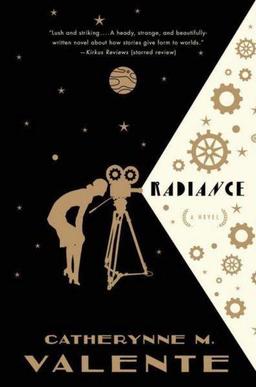 Cat Valente changed the way I collect books.
Cat Valente changed the way I collect books.
Actually, there’s a bit of a story there. I first met Cat at the World Fantasy Convention in Madison, Wisconsin, in 2005. We had tiny side-by-side booths in the back corner of the vast Dealer’s Room. I was hawking the first few issues of my fledgling adventure fantasy magazine, and she was selling her first books, including her novel The Labyrinth, and her poetry collection Apocrypha. We hit it off immediately. At the end of the con I bought a copy of The Labyrinth, and she autographed it for me. “I’ve only signed a few of these,” she admitted. “And I never know what to write.”
Fast forward to 2006, at the World Fantasy Convention in Austin, Texas. Cat’s fourth novel, In the Night Garden, had just been released, and everyone was talking about it. It would eventually receive a World Fantasy Award nomination, and win the Tiptree Award. I bought a copy, and asked her to sign it. “I still don’t know what to write when I autograph books,” she confessed. “What should I say?”
“Well, if you’re leaving it up to me,” I said, “I think you should write, ‘To My One True Love, John.'” Cat laughed, scribbled something in the book, and I left happy.
Now, I bring a lot of books home when I go to conventions. I mean, a lot. Boxes filled with books. I sit in my big green chair and unpack them happily, humming to myself. Sometimes my wife Alice will come and watch disapprovingly, and comment how some of the money I used could also have come in handy feeding and clothing our children. Rarely, as she is going on in this manner, a book will catch her eye. Even more rarely, as happened in this instance, she will open a book. And it just so happened that this time she opened my brand new copy of In the Night Garden.
“Who is Catherynne M. Valente?” my darling wife asked, in a casual voice that ten years of marriage had taught me was absolutely not-at-all-casual.
[Click any of the images in this article for bigger versions.]
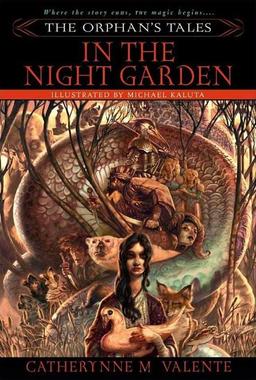 “Hmm?” I said, still happily unpacking books.
“Hmm?” I said, still happily unpacking books.
“Catherynne M. Valente. Your one true love. Apparently.”
“Oh!” I said. “Ha-ha-ha, that’s a funny story.”
“Is it,” says my wife.
“Yes. That’s the thing these days. When people autograph books, everyone writes ‘To My One True Love.”
“Seriously? People do that?”
“I know — weird, right? It’s just a thing, I guess.”
And so, for the past decade, every time I get a book autographed, I ask (ever so casually) if the author wouldn’t mind, you know, inscribing it “To My One True Love, John,” thanks a ton. Over the years I’ve collected some pretty cool variations. John Sprunk wrote “To my one true (platonic) love,” and when Mary Robinette Kowal autographed my review copy of Without a Summer — the first copy she’d held in her hands — she added “Thanks for being my first.”
I have a pretty vast collection of these now. I leave them lying around the house, opened (by chance) to the title page, where the inscription is. I don’t know if this plan is working, but I think it best to keep it up for at least another decade, just to be safe.
In the nine years that I’ve been collecting autographs (I think of it as couples therapy), Cat Valente has gotten over any hesitation she had writing inscriptions. She got a lot of practice with her breakout bestseller, The Girl Who Circumnavigated Fairyland in a Ship of Her Own Making, and its three sequels, The Girl Who Fell Beneath Fairyland and Led the Revels There (2012), The Girl Who Soared Over Fairyland and Cut the Moon in Two (2013), and The Boy Who Lost Fairyland (2015).
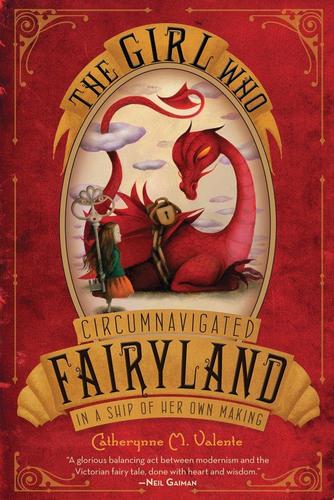 |
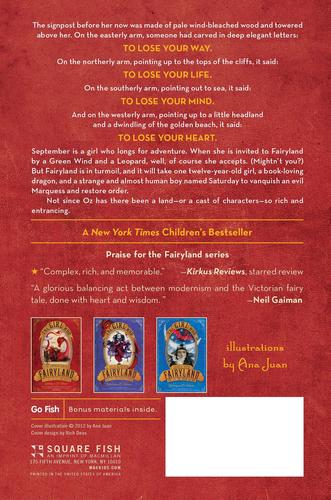 |
A lot has changed since I sat in the back of a Dealer’s room in Madison, Wisconsin with Cat, watching her sell her books by hand. Today, a new novel by Catherynne M. Valente is a major publishing event, with a book tour, large-scale promotional efforts, and countless anxious fans waiting for the book to arrive. Her latest novel, the highly anticipated Radiance, was released in hardcover this week by Tor, and the pre-release buzz has been extraordinary.
I’ve been following Cat’s career since the very beginning, but I’m especially excited about Radiance. Described as “a decopunk pulp SF alt-history space opera mystery set in a Hollywood — and solar system — very different from our own,” Radiance is an unabashed love letter to the imagination, and a celebration of everything that makes science fiction great: fabulous settings, plucky and resourceful heroines, strange mysteries and — especially — uninhibited storytelling.
It is set in a solar system that will warm the heart of every classic SF fan, a simultaneously deeply strange and familiar place where the Moon is owned by movie studios, levitator cults thrive on Neptune, island-sized alien creatures swim the deep oceans of Venus, and prospectors and pioneers mingle in the lawless saloons of Mars. All the planets in our solar system are inhabited, and commercial travel is a simple matter of booking travel on beautiful rockets. Onto this colorful stage steps Severin Unck, rebellious documentary filmmaker, who dares investigate the disappearance of a diving colony on Venus– an investigation that will have disastrous consequences, and lead to her disappearance.
I was so intrigued with the book that I reached out to Cat to ask her about it. As with my conversation with Liz Gorinsky last month about Cixin Liu’s Hugo Award-winning novel The Three-Body Problem, I didn’t intend for it to turn into an interview, but it kind of did. I’ve collected Cat’s fascinating responses to my questions below — in them she talks about the power of science fiction, the allure of silent film, and the incredible challenge of tackling a book as ambitious as Radiance.
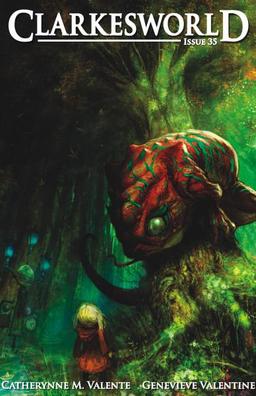
I started, as I usually do, by asking Cat about the genesis of the idea, and why she took it in the direction she did. Here’s Cat.
I had just read an interview with Mark Z. Danielewski about how profound an influence his father, a cinematographer, had been on him, and how much that profession formed his writing style. And I started thinking about how my father had been a filmmaker, and I’d never written about that at all, even though it had also had a profound effect on me, growing up as the daughter of someone so tied to the camera’s eye. At the same time, I was really just starting to write science fiction, and felt restricted by the ideas floating around concerning hard science and hewing to physics as we know it. I wanted to make worlds as wild and colorful as Silver Age science fiction writers had, even if that world was Venus, and in reality quite a hostile place. Put those together and you get “The Radiant Car Thy Sparrows Drew,” which came out in 2009.
The short story “The Radiant Car Thy Sparrows Drew,” appeared in the August 2009 issue of Clarkesworld Magazine, edited by Neil Clarke and Sean Wallace. It was ranked the #11 short story of the year by the readers of Locus magazine, and was reprinted in Rich Horton’s Year’s Best Science Fiction & Fantasy: 2010.
The original story is still online, and you can read it here.
I’m always fascinated with how short stories are often the seed for great novels, and my next question for Cat was how (and why) the short story grew into the novel Radiance. Here’s her answer.
It’s not one of those things where the short story was so madly popular that I followed that into a novel. It was well received, made the Locus List, many people over the years have spoken fondly of it to me, but really, it became a novel because I wanted to make it so much bigger than it was. From the first couple of lines I knew it could be so much more, could be such a rich and thorny world, and answer a lot of my longings with regard to science fiction.
The thing that fascinates me most about Radiance is the marvelously gonzo setting — it’s the kind of thing that makes us old-school pulp fans weak in the knees. There’s been something of a resurgence of interest in classic planetary space opera in the last few years. Just look at Gardner Dozois and George R.R. Martin’s retro-pulp style anthologies Old Mars and Old Venus.
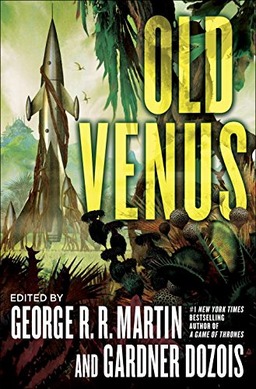 But it turns out there’s a great deal more to Radiance than just a retro-futuristic setting. In Cat’s expert hands, that intriguing premise became just the starting point for a wholly-original novel about the early days of film making, family secrets, and what Cat calls “the terrible power of the camera.”
But it turns out there’s a great deal more to Radiance than just a retro-futuristic setting. In Cat’s expert hands, that intriguing premise became just the starting point for a wholly-original novel about the early days of film making, family secrets, and what Cat calls “the terrible power of the camera.”
Several years ago, I started joking that Radiance was a “decopunk alternate history Hollywood space opera mystery thriller with space whales.” Now that’s more or less on the back of the book. Severin Unck is the daughter of the biggest filmmaker in the Solar System, the Gothic horror director Percival Unck. Rebelling against her father’s prestige and influence, she makes documentaries, and during one shoot on Venus, three of her crew members die, two are driven mad, and Severin disappears.
Radiance is the story of what happened to them — but it is also the story of a world in which space travel was invented in the 1870s and history went a very different way, in which every planet is inhabitable and inhabited, from the noirish neon streets of Uranus to the swamps of Venus to the frozen carnival of Pluto to a Moon owned by movie studios. It’s a story about the terrible power of the camera, about love and redemption and grief and silent film and also about what a colossal dick Edison really was. You know, just your standard sci-fi thriller.
When I learned just how rich the story was, I was immediately curious about how she’d managed to get it all across. “The Radiant Car Thy Sparrows Drew” is structured like a movie script… stretching that out to novel length would take some doing.
But once again, I underestimated the scope of Cat’s imagination. Cat explained that Radiance draws on a whole host of narrative devices… and, as the novel gradually took shape, it slowly turned into a detective story.
I danced around the question of How To Tell This Story for so long. I just couldn’t get it into a regular, A to Z one POV straightforward box. There was too much world, too many places to stand in to get the big, bustling view of it. I’d always, from the beginning, wanted to start the book off with the dual gossip columns, one describing Severin’s first public appearance, the other her funeral. From there, I started to add in more ephemeral material: radio scripts from “BBC Luna,” advertisements, transcripts of meetings and film scripts. But I still struggled to find a frame to hold everything together.
Then, my partner told me a strange thing about shooting scripts — they’re often color coded. One color for the first draft, another for added scenes, another for new added scenes, and so on. And from that image of a constantly evolving, rainbow script, I hit on the notion of Percival Unck trying to make a movie about his daughter’s disappearance, trying to process his grief the way so many of us do, with stories. And failing, of course, struggling to tell a real story about a terrible thing when all he’s ever done is build paper mache vampires and dragons.
And so one of the major throughlines is Percy trying to make this film, trying to make Anchises St. John into a hero the public will embrace when he’s nothing of the kind, flitting through different genres — noir, Gothic, cartoon, mystery, Western — trying to find anything to make his life make sense. And everything else fell into that, a kind of Rashomon-style peeling back of versions of the disaster on Venus, looking for the truth from any source that has a scrap of it to spare, and wondering how much the truth matters in the end.
And it slowly became a detective story. Trying to find one girl in the whole Solar System, and running into every other thing in the universe along the way.
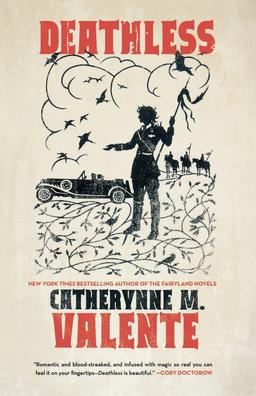 The last thing we discussed was one of the toughest aspects of the book — the re-write. Cat submitted it to Liz Gorinsky at Tor, who also edited Cat’s previous Tor novel, Deathless. Cat told me that the book literally doubled in size during the editing process.
The last thing we discussed was one of the toughest aspects of the book — the re-write. Cat submitted it to Liz Gorinsky at Tor, who also edited Cat’s previous Tor novel, Deathless. Cat told me that the book literally doubled in size during the editing process.
Why did that happen?
Well, the simple answer is: I didn’t do a very good job with all that on the first go. My editor was as nice as possible about it. But the first draft was wickedly dreadful. It was a mess. She sort of pinned everything out like a butterfly, but I had to figure out how to bring it back to life. Most especially, she pointed out very rightly that I had chickened out on the ending. I hadn’t wanted to commit. I’d thought I could get away with that whole postmodern ambiguity thing and I just made something washed out and soggy and meaningless.
I wasn’t good enough when I started out. That’s the truth. I had to become a better writer — a much better writer, really — to make Radiance on the page look anything like the Radiance in my head. It’s the most ambitious book I’ve ever written, I think. I went back to square one. I bought books on beginning writing, on structuring a novel, on writing detective fiction, popular fiction, horror, suspense, on screenwriting. I cleared off one whole wall in my study and did the classic thing: wrote every beat out on index cards and taped them to the wall so I could move them around and find the bones of the thing. I started re-reading books — not even ones I thought were particularly brilliant, but ones that had that “gotta find out what happens” quality that raises the hair on your neck and can exist independent of pretty language or literary technique, and I tried to map out how they did it.
And I started writing things I’d never written before, just by chance and being mainly a fantasy writer. A simple murder with a gun. An interrogation scene. And things crazier than that — an over the top radio melodrama from the 1930s, movie scripts from old-school adventure serials that never existed, exposition narrated by a singing, dancing cartoon mongoose and octopus team, kangaroos ranches on Mars. And it was all such a joy, and it all felt so terrifying, and I kept asking myself if it was brilliant or terrifically stupid, and whether I was allowed to write a scene like that, or that, or that, or God, really, Cat, that?
And by the time I was done working through all of that, Radiance had doubled in size and become something far more epic, far funnier, far more rollicking, far more sensible, and far more terrifying than what I’d written before.
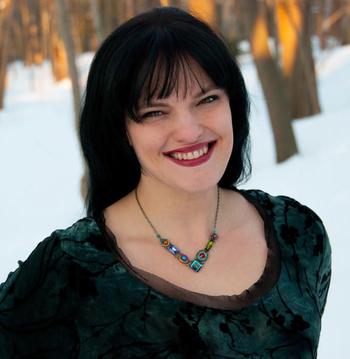
Did she succeed? The early reviews have already started to trickle in, and it’s apparent that the answer is a resounding ‘Yes.’ Novelist Maria Dahvana Headley calls Radiance:
A gleaming, screaming love letter to an imaginary age of interplanetary cinema, and its premiere female auteur, Radiance is an elegiac murder mystery set in a Mélièsian universe of wonders.
And the starred review from Publishers Weekly sums up the book’s wide appeal:
The long-awaited first science fiction novel — though it’s really more of a cosmic fantasy — from Tiptree winner Valente… is a masterpiece of storytelling, seductive in prose and ambitious in scope. In an alternate 1944 where interplanetary travel is the norm, a film crew headed by Severin Unck journeys to Venus to investigate the Roanoke-like disappearance of the diving village Adonis. The voyage ends in disaster… This celluloid fairy tale about one woman’s life beyond her father’s legacy and the all-seeing eye of the lens will captivate readers with all the drama and wonder that Valente’s strange and wonderful golden age Hollywood demands.
It’s already clear that Radiance is one of the year’s major releases, a brand new classic of science fantasy. Although, with typical humility, Cat downplays the early rave reviews, saying only:
I’m still not sure whether it’s brilliant or terrifically stupid, but either way, it’s awfully grand.
Radiance was published in hardcover by Tor on October 20, 2015. It is 432 pages in hardcover, priced at $24.99 in hardcover, and $11.99 for the digital edition.
I can’t wait to get my hands on a finished copy. And I already know just what I’m going to ask Cat to say when she signs it.
See all of our recent coverage of the best new fantasy books here.